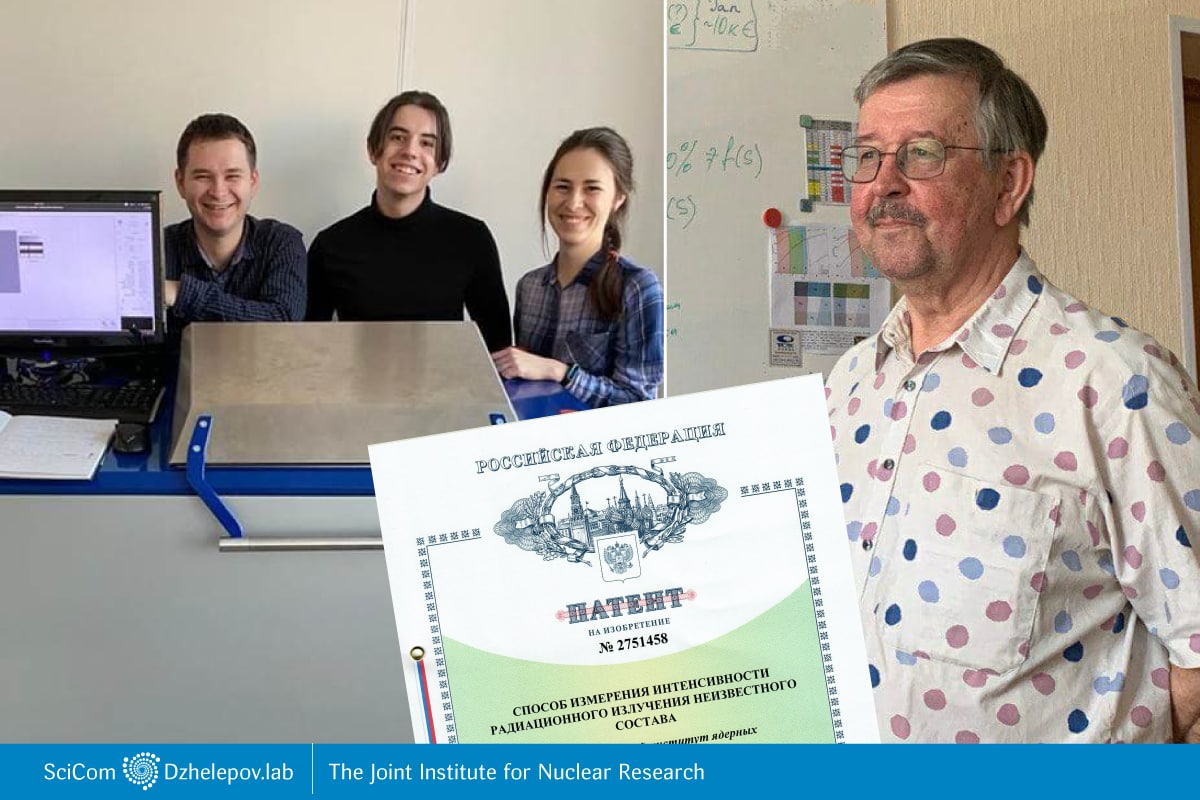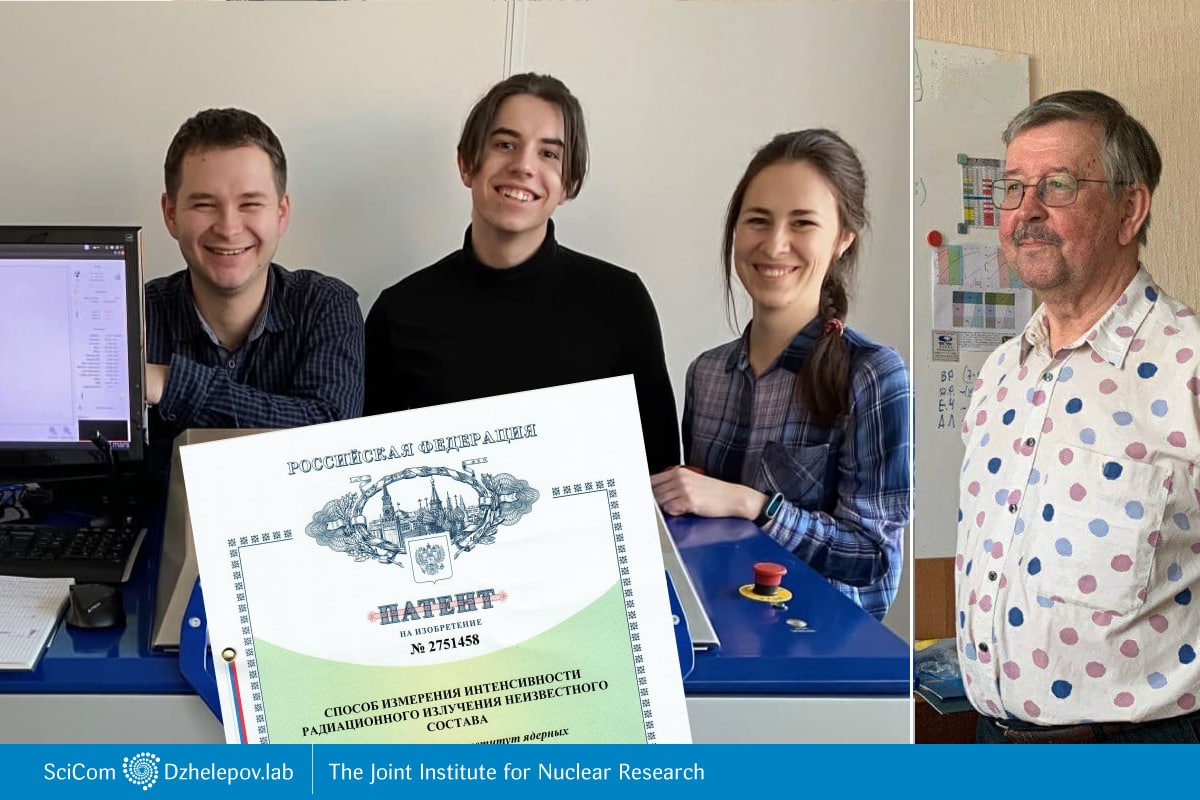Patent for a New Method for Measuring the Intensity of Radiation of Unidentified Composition. Commentary by G. A. Chelkov
On 14 July 2021, the Joint Institute for Nuclear Research received a patent for the invention “A method for measuring the intensity of radiation of unidentified composition”. The Group of Scientific Communication talked to Georgy Alexandrovich Chelkov, a leading researcher of the DLNP Experimental Department of Colliding Beams and one of the patent authors.

 Vladislav Rozhkov, Daniil Rastorguev, Elizaveta Cherepanova and Georgy Chelkov
Vladislav Rozhkov, Daniil Rastorguev, Elizaveta Cherepanova and Georgy Chelkov
“To invent something useful is not a goal of scientists. They resolve experimental problems, with something new and potentially useful often being found out. In this case, the invention is patented, and then it can be applied somewhere,” points Georgy Alexandrovich out.
It is what happened to the patent for a new method for measuring the intensity of radiation of unidentified composition.
“The idea came to mind during processing of data from the GaAsPix system used for monitoring radiation background in the cavern of the ATLAS experiment. The system uses pixel semiconductor detectors with gallium arsenide (GaAs) sensors of different thickness, 1 mm and 0.5 mm. We know well that charged particles of sufficient energy are tracked by our detectors with a 100-percent probability whatever the thickness of a sensor along which particles “leave their footprints”. That means that two detectors with sensors of different thickness will detect charged particles identically.
Neutral particles (first of all gamma quanta and neutrons) behave in quite a different way. They always have a chance (probability) to pass through our sensor without any interaction and therefore without being detected. This chance depends on the detector sensor thickness (volume). Here is an example. Let us take a look at two detectors with sensors, one twice as thick as the other. After detecting a beam containing only charged particles, counts from the both detectors will coincide. And after detecting a beam containing only neutral particles, the counting rate of a thicker detector will be twice as fast as the “thinner” one. Then, as they say, everything else is the course of routine and elementary arithmetic. Considering the ratio of counting rates of detectors of different thickness, the correlation between a charged and a neutral component can be determined in a beam of unidentified composition. Of course, this method has its limitations — energies of both charged and neutral particles have to be rather high to prevent particles from stopping inside the sensor and to enable their piercing through it, even through the thickest one.”
“We consider this idea as simple, clear and elegant,” remarks Georgy Alexandrovich.
___________________________
There are many ways to measure both the total flux and dose from a radiation source and the separate components of this radiation. To measure neutron radiation doses, passive detection systems are mainly used. These systems can determine radiation doses with a sufficient precision, but only in limited energy ranges of neutron radiation. Data from these systems are processed only some time later and only after transporting the detector to a specialized control laboratory. As a result, excessive radiation is usually detected much later. The invention of our colleagues enables solving both problems: defining fractions of charged and neutral particles in radiation from any source and conducting measurements immediately during irradiation.
Читайте также:
Поздравляем наших коллег с получением патента!

